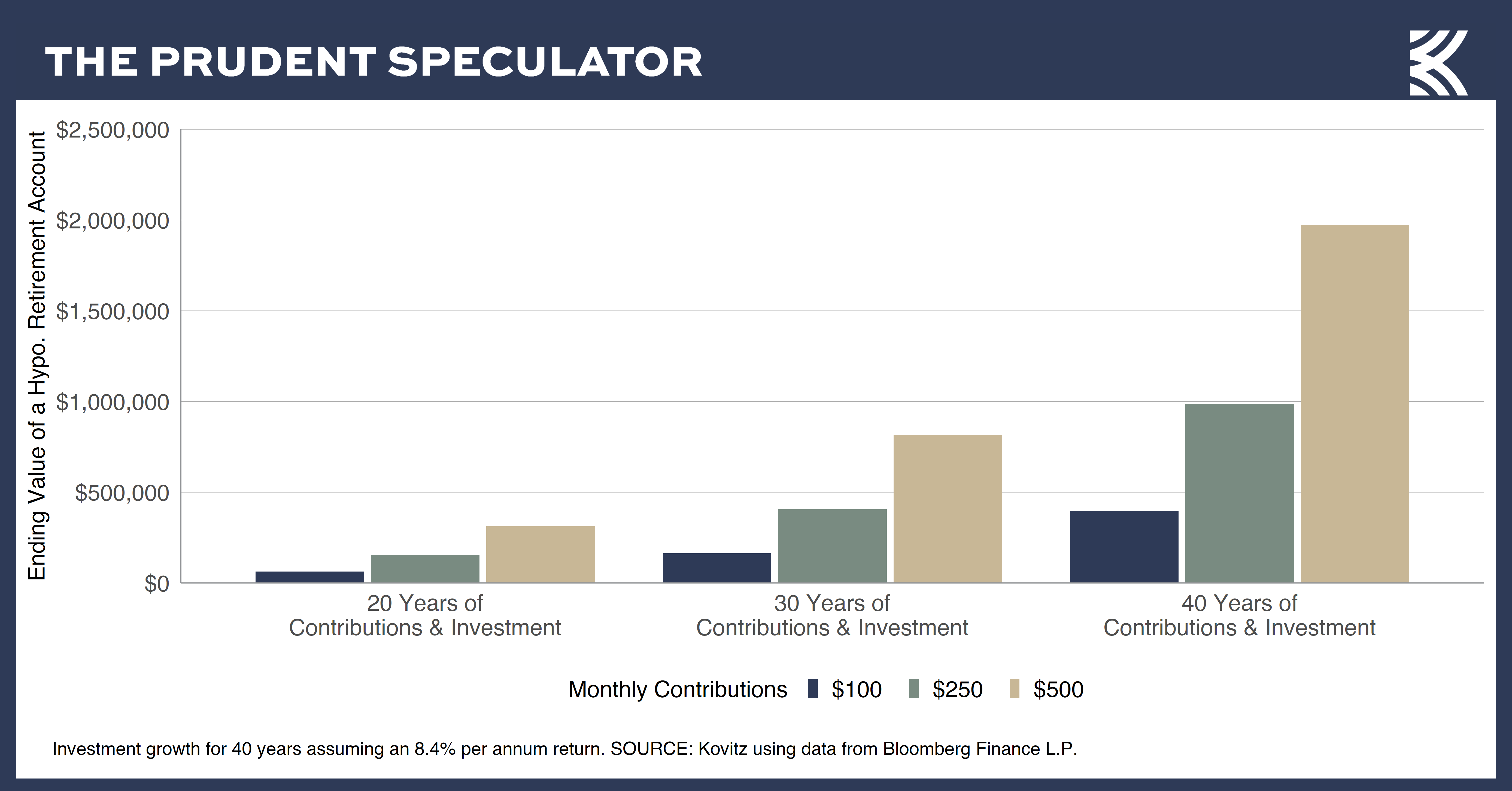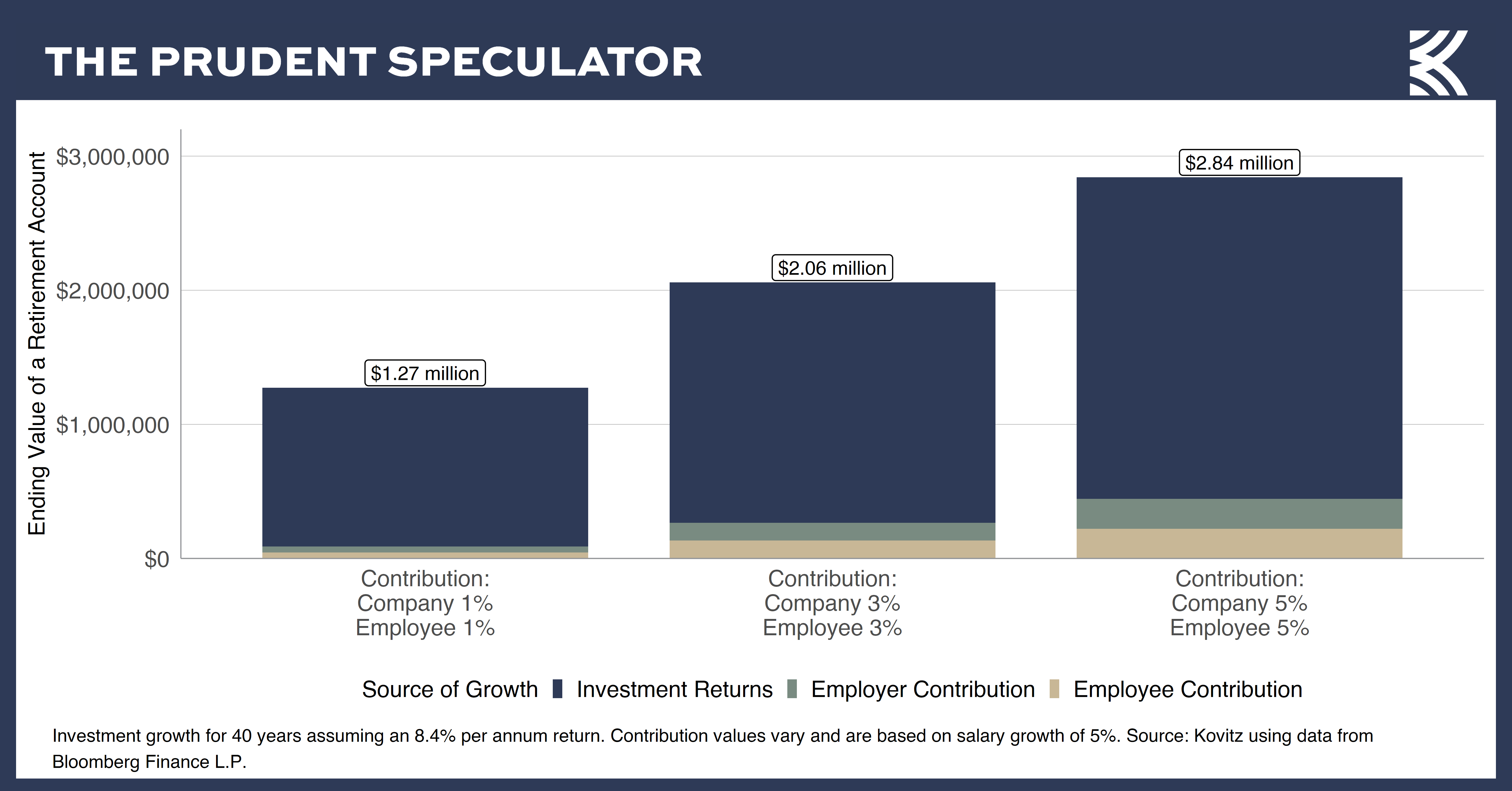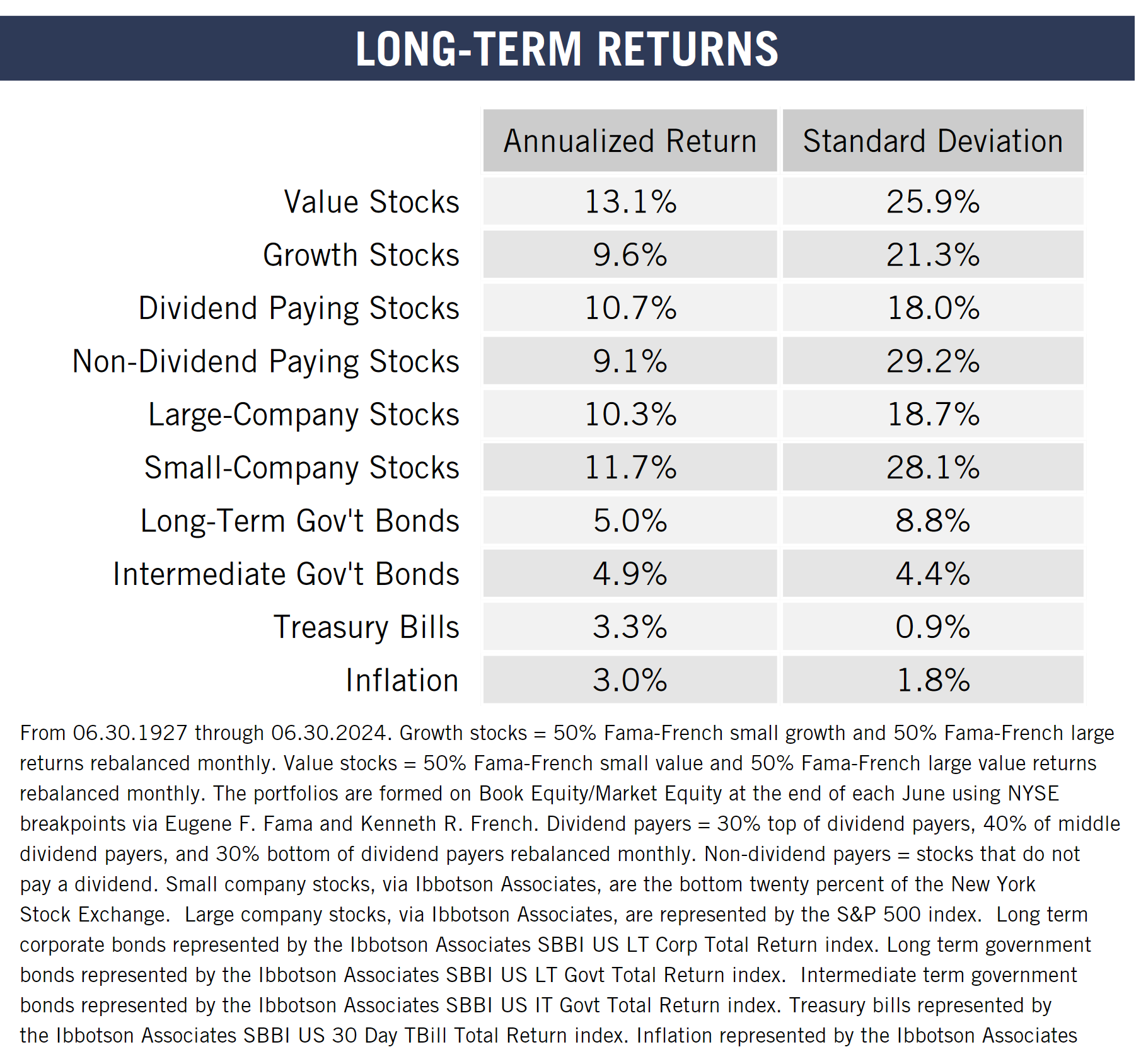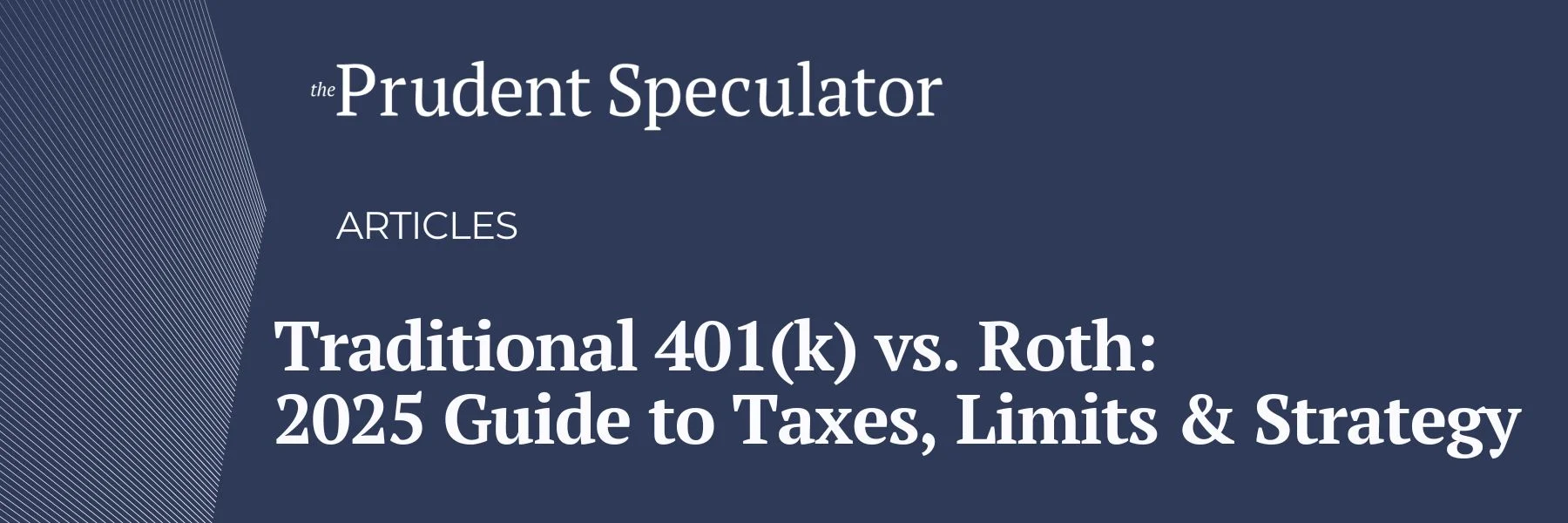The power of compounding returns (and compound interest) can help your portfolio grow faster than it would grow with contributions alone. One can expect the impact from compounding to be larger with longer time horizons.
For example, if you invest $1000 at a 7% annual return, you’d earn $70 in interest. In the second year, you’d earn $74.90 of interest ($70 on your initial investment and $4.90 on the interest you earned in the first year. This effect over time adds up to significant returns, with the initial $1,000 doubling after 10.3 years. Of course, we note that 7% is a low estimate for equity returns. From June 1927 through June 2024, Large Company Stocks (the S&P 500 index) grew at an annualized rate of 10.3%, while our favored Value Stocks grew at 13.1% and Small Company Stocks grew at 11.7%.
The Power of Compounding
The power of compounding, paired with a consistent investment strategy, can yield big rewards over time. Here’s how:
1. Compound Interest
Compound interest means that you earn returns on your initial investment in addition to the accumulated interest (or returns) from previous periods. This allows your investment to grow exponentially over time.
2. Consistency
As the chart below shows, it’s investing modest sums of money over long periods of time can turn into a sizable nest egg. Just $100 per month grows near $500,000 after 40 years, while a $500 contribution approaches $2 million over the same period. We understand it is not easy to save, especially early in one’s career, but the chart shows that small amounts are still better than nothing.

3. Time
By consistently investing over many years, investors and savers can benefit from dramatic wealth growth. In the chart below, we show a worker with a $35,000 salary that benefits from employer matching contributions (such as a 401(k) Safe Harbor contribution). By retirement age, the lion’s share of account value comes from investment returns rather than from contributions.

Charlie Munger said the first rule of compounding is to never interrupt it unnecessarily. Reinvesting dividends from stocks or other assets can further boost gains. It may be tempting to skim dividends off the top, but they can be a powerful addition to your compounding efforts.
This saving strategy involves investing a fixed amount regularly, irrespective of market conditions. We can appreciate that it’s tempting to time the market, particularly when the feeling of impending doom is imminent. Yet market history shows that the hardest part of market timing is getting the timing right.
6. Long-Term Returns
Historically, the stock market has provided average annual returns north of 9% over the long term. In the short term, anything can happen, but investors saving for retirement that is likely to be years or decades away, the near-term gyrations to little more than help one stray off course. The table below shows that Equities have posted stellar returns over the preceding almost-century.

Stay the Course
In summary, the combination of compound growth, consistency, time and frequent contributions allows small investments to generate substantial gains over time. In addition, it helps to start early and exercise patience as the near-term volatility gives way to long-term growth.
Kovitz Investment Group Partners, LLC (“Kovitz”) is an investment adviser registered with the Securities and Exchange Commission. This report should only be considered as a tool in any investment decision and should not be used by itself to make investment decisions. Opinions expressed are only our current opinions or our opinions on the posting date. Any graphs, data, or information in this publication are considered reliably sourced, but no representation is made that it is accurate or complete and should not be relied upon as such. This information is subject to change without notice at any time, based on market and other conditions. Past performance is not indicative of future results, which may vary.




